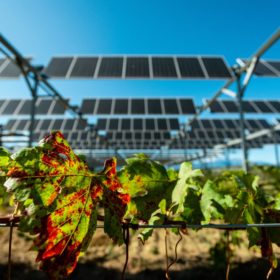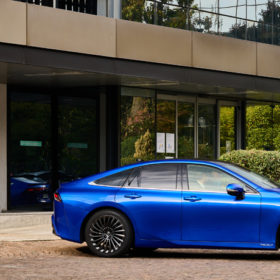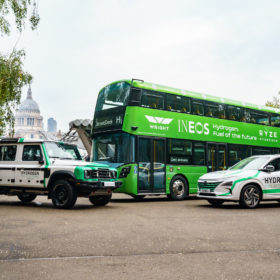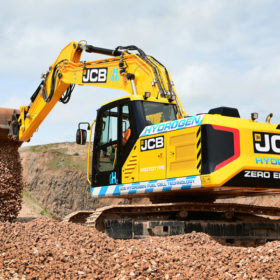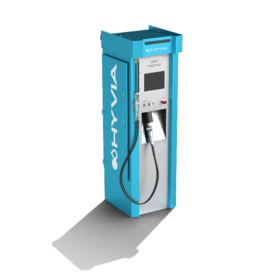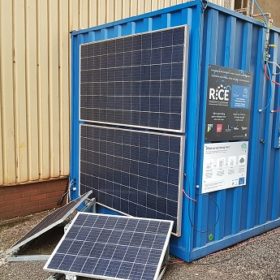‘Italy can be a laboratory for agrivoltaics’
Efforts are being made to come up with a less convoluted approach to planning farm-based solar systems, in the only EU member state which explicitly apportioned funds for agrivoltaics in its post-Covid spending plans.
The Hydrogen Stream: Saudi Arabia bets on blue hydrogen, Denmark wants to improve green alkaline electrolysis
Elsewhere, Snam and Toyota are pushing for more hydrogen-based mobility in Italy, and Woodside Petroleum wants to establish an export-oriented hydrogen and ammonia production facility in Australia.
The hydrogen stream: High gas prices mean cost competitiveness
New investments and partnerships announced this week see hydrogen projects developing across Europe, India, Asia and more. The current climate of high prices for natural gas has led one company to exclaim that green hydrogen is now competitive with its fossil fuel produced ‘grey’ counterpart, and research continues into optimizing hydrogen supply chains and smoothing its integration into the energy landscape.
The Hydrogen Stream: Rolls Royce, rising prices, and hydrogen fueled beer
This week sees hydrogen pricing hit new highs, driven by simultaneous jumps in the price of natural gas and electricity. Elsewhere, project plans include green hydrogen production at a UK brewery and Ineos building a 100 MW electrolyzer in Germany, machinery manufacturers Rolls Royce and JCB making plans for hydrogen engines, and new investment agreements signed in Belgium, Sweden and Kazakhstan.
The Hydrogen Stream: $12 million financing for large-scale LH2 tank, new strategy for Australia’s NSW
Among other announcements, the U.S. Department of Energy has awarded financing to a consortium of public, private, and academic experts to demonstrate a large-scale liquid hydrogen LH2 tank, a new hydrogen strategy has been unveiled by Australia’s New South Wales (NSW) state government, and Repsol and EDP have teamed up to assess new investment opportunities in renewable hydrogen projects across the Iberian Peninsula.
The Hydrogen Stream: Hypoint and BASF team up, Green hydrogen strategic priority for France
HyPoint has teamed up with Germany’s BASF to develop high-performance fuel cell membranes for use in its hydrogen fuel cell system while Italian gas transmission system operator Snam has launched a program to support startups along the entire hydrogen value chain, and French President Emmanuel Macron said that small modular reactors and green hydrogen are two of the country’s development objectives to 2030.
The Hydrogen Stream: New magnesium-based composite for hydrogen storage and a big push from South Korea
Researchers at Canadian Nuclear Laboratories (CNL) identified a new magnesium-based alloy that could be used for hydrogen storage. Furthermore, Hyundai Mobis announced a $1.1 billion (€0.95 billion) investment in two new fuel cell plants in South Korea, while South Korea’s SK Group formed a joint venture with US hydrogen solutions company Plug Power to develop green hydrogen across several Asian countries.
The Hydrogen Stream: A new engine from China and IEA predictions for this decade
Chinese carmaker GAC Group has unveiled an engine it claims improves the mixing process of hydrogen and air. Elsewhere, the IEA has said $7 billion in new electrolyzers will be required globally by the end of the decade, and a British consortium is planning to build green hydrogen production facilities alongside 4 GW of solar, wind, and battery projects it is developing in the United Kingdom.
The Hydrogen Stream: Electrolysis tech that can produce hydrogen from virtually any water source including salt water
A Swiss-Canadian consortium is developing a novel process to produce green hydrogen. Furthermore, Italy’s Snam is cooperating with IRENA and a French consortium wants to deploy high-end hydrogen storage systems for the railway sector.
The Hydrogen Stream: Mongolia’s potential for producing green hydrogen at $3.30/kg
A German research group has identified Mongolia’s South Gobi region as an ideal location for the production of cost-competitive green hydrogen. Elsewhere, the U.K. is seeing more on and offshore-powered renewable hydrogen projects.
